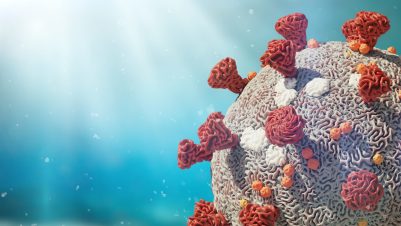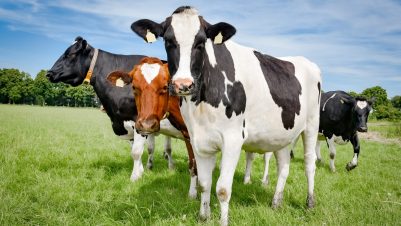
What led you to the position of Head Vet for Durrell Wildlife Conservation Trust?
I’m of the generation that was inspired by the triumvirate of Sir Peter Scott, Sir David Attenborough and, of course, Gerald Durrell. I went through vet school being the oddity – there were very few people interested in zoo and conservation work. After graduating, I spent 13 years in general practice while doing volunteer wildlife work. In the mid-’90s I started working with wildlife and subsequently more in the field of zoos and conservation. I spent some time in Hong Kong, Indonesia, the States – then I moved back to the UK and spent 8 years at the Zoological Society London (ZSL), 6 of which were as the Chief Veterinary Officer. I moved to Durrell 5 years ago – it’s a strange closing of the circle. I never met Gerald Durrell, but his influence and legacy, and his statue at the zoo, remain with us.
How does the job at Durrell differ from your previous roles?
It doesn’t differ very much from the job at ZSL, though I’ve got a much smaller department here – I am one of just two vets. It’s a regular zoo vet job, as it were, still drawing on clinical skills and going back to first principles because, for many of these animals, there are no text books to which we can refer. We also try to publish research and run training courses – we have a regular throughput of students and veterinary colleagues.
Which conservation projects are you most involved in?
The largest component of my overseas work is in Madagascar, where we’re working on two key species: the Madagascan pochard and the ploughshare tortoise.
We’re working with partner organisations to find a lake suitable for the reintroduction of the Madagascan pochard. In contrast, there’s plenty of habitat in the wild for ploughshare tortoises, but they command astronomically high prices on the black market. We’re trying to run a conservation and breeding programme to build numbers while working with local communities and statutory authorities in Madagascar to look at the illegal activity.
I’ve also been involved with our pygmy hog project in Assam in India, and with the mountain chicken frogs in the Caribbean, which are struggling with the chytrid fungus.
How much of the conservation work takes place at Jersey Zoo?
You can visit Jersey Zoo and you won’t see a Madagascan pochard – we’ve built up the skill base with our people in Madagascar so we can run the programme in-country. That gives us many benefits – principally, there’s no risk of us reintroducing them into the wild with a non-native disease and all that implies.
The mountain chickens are held on Jersey in a biosecure manner, which has meant we can look at reintroduction programmes for these animals with confidence that they won’t be taking any captive-derived diseases back with them.
There are other animals within the zoological collection, and for those we’re very much reliant on day-to-day health management – screening, disease risk analysis. We are a zoo and people visit us but, even so, we always aim to provide the best management and healthcare.

Could you tell me about the process of importing and exporting animals to and from the zoo?
We now bring in very, very little from the wild. The last animals we brought in for a breeding programme were the mountain chickens. In the face of a catastrophic outbreak of chytridiomycosis, it was decided between Durrell Wildlife Conservation Trust, ZSL, Chester Zoo and local partners that we would bring about 50 adults into captivity with a view to future releases. The frogs were all given treatments for the disease in captivity pre-shipment. Prophylactic treatments continued after the frogs came to Jersey to be held in their biosecure units.
The waste water underwent breakpoint chlorination to disinfect it. All the waste was held, double-bagged, dealt with as clinical waste and incinerated. Following what we believed to have been sufficient quarantine, we swabbed the mountain chickens for the chytrid fungus and had PCR run on it. Interestingly, it’s a requirement of the States of Jersey that any amphibians brought onto the island are held in quarantine in a similar manner and are screened for chytrid by PCR before officially clearing quarantine.
Is it your responsibility to make sure no contagious diseases are brought to the island via Jersey Zoo’s collections?
On the whole, it’s very much a teamwork job; the responsibility of the collection lies with me and the island’s animal-health responsibility lies with the States vet, Theo [Knight-Jones].
Theo has the final statutory authority – he’s got that for all Jersey cattle, pet imports and exports, animal welfare laws, etc. We worked very closely together in the late winter and early spring when there was the threat of the avian influenza. We don’t have much wetland here but there was always the prospect of migrating birds coming in, so we worked with Theo to draw up plans for epidemiological units and to set in place all sorts of contingencies.
You mentioned that you’re involved with research – is that a requirement of the job?
All zoological collections are obliged to carry out conservation education and research to some degree. We try to focus our limited resources on those species for which we feel Durrell has a greater degree of responsibility. Many of those are Gerald Durrell’s ‘little brown jobs’ – species that may not make it into the regular zoo collections because they are small, or they won’t eat or poison you. Our “research” is always driven by a clinical agenda and is non-invasive – then we aim to peer-review publish our findings.

Have any moments particularly stood out as memorable since starting your role with Durrell?
Many, many! Sitting, recently, in Land Rovers for 12 hours on bad roads as we moved between centres in Madagascar is still etched on the mind and the body.
However, I’ve also stood on the roof of our office building at our breeding centre for the Madagascan pochard knowing that there are about 25 of them in the wild; in the various aviaries in front of me there were around 75 individuals, so at that time, within my line of sight, there was 75 percent of the entire species. I have all sorts of moments like that where I just think, “Wow. I’m so lucky to be stood here.”
Do you have any advice for vets thinking of moving into a zoo-based role?
I’ve volunteered in a number of countries (including the UK) and have no regrets whatsoever about taking those opportunities. There are postgraduate opportunities, and I’d always recommend mixing and mingling with non-vets working in conservation – there are some remarkable, very inspirational people out there.
Finally, join British Veterinary Zoological Society – come and meet up with many like-minded people at our annual conference (the next one is coming up in October!).











